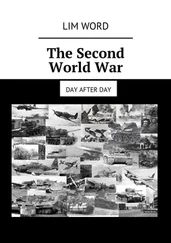We must, of course, resist the temptation to paint an anachronistic picture of the post-war world. It is only the mass rapes during the wars in Yugoslavia that have raised our awareness of war-related sexual violence. And there is still a great discrepancy between the improved international legal framework and the specific possibilities for a victim to obtain recognition of her rights. Monika Hauser from the medica mondiale aid organization, which provides support for victims of war-related sexual violence throughout the world, complains that sexual violence is still rarely considered a war crime. Instead, rape is regarded as collateral damage and the incidents hushed up, leading to post-stress trauma that extends to future generations. [40] See speeches and publications on the tenth anniversary of the International Criminal Court on the medica mondiale website, www.medicamondiale.org .
‘ANONYMOUS’ AND THE CENSORSHIP OF MEMORY
The most famous personal testimony of the mass rapes at the end of the Second World War is the diary of ‘Anonymous’, entitled A Woman in Berlin. The story of this book gives a good idea of the way war-related rape was viewed in the late 1950s. The diary was published in the mid-1950s in seven languages with great success, but the German edition in 1959 failed to attract much attention. Then it disappeared for almost half a century from the market, until it was republished in 2003. This time it remained for eight weeks at the top of the Spiegel bestseller list – and once again met with resistance. What upset people so much about this book? Was it because of the work itself?
After the German version was published for the first time, the supposed immorality of the Berlin author, who wished to remain anonymous, was used against her in the late 1950s and early 1960s. She was accused of ‘capitalizing in a questionable manner’ on the national catastrophe, including the mass rape. Der Spiegel defended her, writing that the text was great-hearted and described events, figures and feelings ‘from the Russian era with understanding and a sense of reality’. The horror, numbness that took over after so many rapes, and the defeatist ‘rape humour’ were typical of those days in Berlin, said the magazine. The diary might not be literature, but it should not be dismissed as cheap sensationalism either. [41] Der Spiegel , 30 March 1960.
Telegraf , a Berlin newspaper, patronizingly praised the woman in Berlin for reporting ‘without hysteria’ about a collective fate of German women. [42] Telegraf, Berlin, 29 November 1959.
Most reactions were negative, however. Tagesspiegel was typical: only the high sales figures abroad (294,000 copies in the USA, 210,000 in the UK, 120,000 in the Netherlands, 30,000 in Sweden, 7,000 in Norway, 5,000 in Denmark and 4,500 in Italy) had forced the reviewer to look at the book in detail. She was irritated by the explicit description of what were just ‘episodes’. The way the women friends discussed the subject was so repulsive to her that it was impossible for her to back up her judgement with quotes from the book. Tagesspiegel readers would thus have to content themselves with the message that the book was salacious and defamed all women who had been in that situation. [43] Tagesspiegel , 6 December 1959, from the newspaper cutting collection for the exhibition ‘Worüber kaum gesprochen wurde: Frauen und alliierte Soldaten’, in: Material zur Ausstellung des Heimatmuseums Charlottenburg, 3.–15.10.1995.
Thus, it was not the subject itself that was the problem when the book was first published. Nor was it a breach of taboo, since the major newspapers had already reported on it, and there was a large documentation project on flight and expulsion, which contained hundreds of reports of rape. It is true that the documentation was written by men who had scientific licence to ‘expose’ the suffering of the women and shed light on it in the interests of the German question and the East–West conflict. There was no secrecy in the 1950s about what had taken place, as is often claimed, but rather certain rules about who should remember what and how. The way in which ‘Anonymous’ described these days in Berlin apparently broke these rules.
Other victims also found that speaking about the rapes in the 1950s put them in an ambivalent position. They were accused of having fraternized all too quickly with the Soviets, or that it was their nature. They found it impossible to talk about their emotional state. E. A. had such an experience: ‘People thought that I was probably not completely blameless, so it was better not to say anything. It had such a negative image that people kept it to themselves.’ C. S. also experienced mostly negative reactions:
They would look me up and down, wag their finger at me. Or I have even heard people say, she’s having a Russian brat, or things like that. It affected me, but I thought I won’t show that I’m upset, I’ll just ignore it. You have to have a thick skin. And when I started to show, I was proud to cross the courtyard. We lived in the back of a long building. People could see me plainly from the window, and I would sometimes hear dirty remarks, you and your Russian brat, and I would raise my dress and tell them to kiss my ass. It was my Russian brat not theirs. Do you think it was any different for women who were with Americans or English? It was just the same. Not to mention those who had been with Africans, and then a little half-caste came out. You can imagine what that was like. There were some who didn’t care, but mostly people wouldn’t look you in the eye. [44] Ibid., eyewitness accounts in Museum Charlottenburg.
Even in Berlin, therefore, where so many victims lived, it was not possible for them to show their emotional damage publicly. Society expected them to bite the bullet, and the women probably expected that that was what they should do as well. The book by ‘Anonymous’ flew in the face of the needs of society at the time, which wanted to look to the future rather than the past.
Under suspicion again
After almost fifty years of hibernation, A Woman in Berlin was reissued in German in 2003 and, according to Wikipedia, was the bestseller of the season. [45] https://en.wikipedia.org/wiki/A_Woman_in_Berlin .
The book was ‘unique’ and ‘deserved the greatest attention’, wrote the Frankfurter Allgemeine Zeitung. [46] Frankfurter Allgemeine Zeitung , 21 June 2003, p. 44.
But, once again, there were serious reservations. In particular, Jens Bisky, writing for the Süddeutsche Zeitung , described the book as ‘worthless’. It had been sloppily edited, he said, and probably not even written by ‘Anonymous’ herself. [47] Bisky, ‘Wenn Jungen Weltgeschichte spielen.
The question of authenticity was only a pretext, however. It was not the credibility of the source, but rather of the author and hence of the historical events, that was questioned.
The diary by ‘Anonymous’ offers a personal view with almost nonchalant self-assurance. As we now know, the author was ‘outed’ against her will and turned out to have been a journalist in her early thirties, well-travelled and familiar with different languages and cultures, including the Soviet culture. She had led an independent life, turned her back on the traditional church, studied art and history at the Sorbonne and worked as a freelance journalist – anything but the normal life of a woman of her generation. ‘Anonymous’ (as the author wished to remain anonymous, we shall retain the name here) realized that she belonged to an elite. She wanted to distance herself from the ‘herd instinct, a mechanism for preservation of the species’, and that is why she hated going down to the air raid shelter. [48] Anonymous, A Woman in Berlin – Eight Weeks in the Conquered City: A Diary (London 1982).
Her vitality was boosted by every threat to her life, and she was burning more fiercely than before the air raids because she was aware that she was experiencing history at first hand: ‘Each new day of life is a day of triumph. You’ve survived once again. You’re defiant.’ [49] Ibid.
Читать дальше











